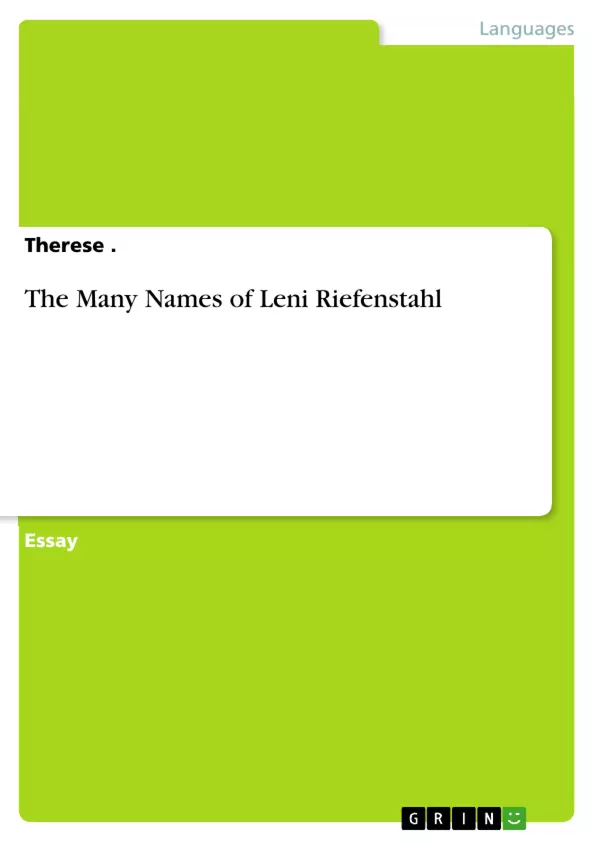Leni Riefenstahl has been, and still is, a much-discussed person. She has been called many things, and given many labels. She has been called a liar, a man-eater, a Nazi, an extraordinary talent and a genius. She was an actress, director, dancer, filmmaker and photographer. In her career, she has done everything between making Nazi propaganda films, to taking photos of Mick Jagger, to photograph unknown tribes in Africa. Leni had many talents, but her great passion, and what she is best known for is her great filmmaking. She was the brain behind the masterpiece of propaganda films Triumph of the Will [1935], which she made for Hitler and the Nazi Party before World War 2. She was a close friend to Hitler before and during the war, and as described in Bach (2007 p.388) she is probably best known as “Hitler’s Filmmaker”.
Table of Contents
- Introduction
- Background
- Films
- Triumph of the Will and filmmaking for Der Führer
- Post-War
Objectives and Key Themes
This essay seeks to provide a comprehensive analysis of the life and work of Leni Riefenstahl, a prominent filmmaker and photographer. The essay explores her multifaceted career, her relationship with Adolf Hitler, and the controversies surrounding her work, particularly her involvement in Nazi propaganda films. Key themes and topics include:- Leni Riefenstahl's early life and artistic development.
- Her transition from actress and dancer to filmmaker and photographer.
- The role of her films in shaping Nazi ideology and propaganda.
- The complex relationship between Riefenstahl and Hitler.
- The lasting impact of her work and the controversies surrounding her legacy.
Chapter Summaries
The first chapter introduces Leni Riefenstahl as a multifaceted figure, highlighting her diverse career spanning acting, directing, dancing, and photography. It emphasizes her significant role in the creation of the propaganda film "Triumph of the Will" and her connection to Hitler. This chapter raises questions about her motivations and intentions, prompting further exploration. The second chapter delves into Riefenstahl's background, highlighting her upbringing in a working-class district of Berlin, her complex relationship with her father, and her early ventures into dance. It explores her beauty and the numerous romantic relationships she had, including a controversial relationship with a Jewish boy, Walter Lubovski, and a turbulent affair with Otto Froizheim. The third chapter explores Riefenstahl's filmmaking career, detailing her involvement in early documentary films, including "Ways to Strength and Beauty" and "The White Hell of Pitz Palu." It emphasizes the significance of "The Blue Light" in attracting Hitler's attention and leading to her collaboration in propaganda films. The fourth chapter delves into the making of "Triumph of the Will," exploring its historical context, its role as a propaganda film for the Nazi Party Congress, and its lasting impact on cinematic history. It highlights Riefenstahl's personal relationship with Hitler and the speculations surrounding their alleged intimate relationship.Keywords
This essay delves into the life and work of Leni Riefenstahl, exploring her diverse career as a filmmaker and photographer, her complex relationship with Adolf Hitler, her involvement in Nazi propaganda films, particularly "Triumph of the Will," and the controversies surrounding her legacy. Key terms and concepts explored include: Nazi propaganda, film aesthetics, documentary filmmaking, German cinema, artistic collaboration, personal relationships, historical context, and artistic legacy.- Quote paper
- Therese . (Author), 2012, The Many Names of Leni Riefenstahl, Munich, GRIN Verlag, https://www.hausarbeiten.de/document/201085


